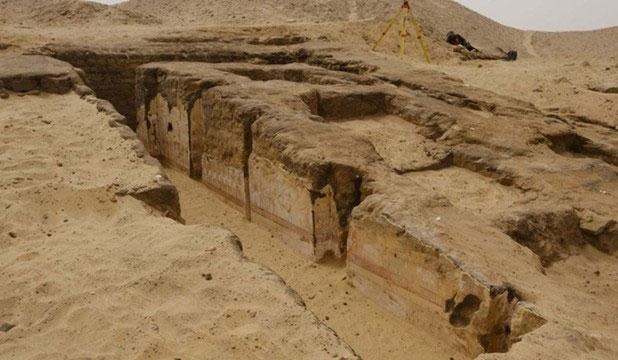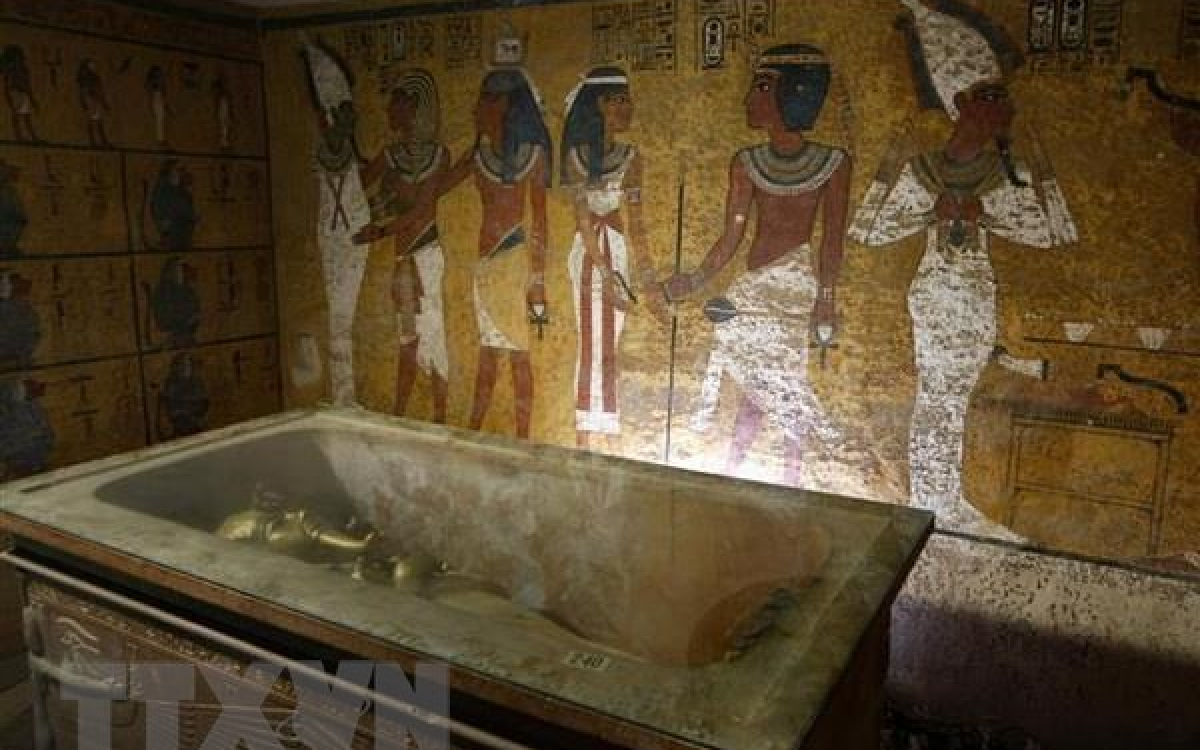A group of experts from the German Archaeological Institute in Cairo recently announced the discovery of an ancient mastaba-type tomb in the Old Kingdom period (Egypt).
The mausoleum is uniquely painted and decorated, in the latest excavations at the Dahshour royal cemetery , about 40km from Cairo.
 New ancient tomb discovered in Egypt. (Source: Al-Ahram).
New ancient tomb discovered in Egypt. (Source: Al-Ahram).
Official of the Egyptian Supreme Council of Antiquities (SCA) Hisham El-Leithy said that this discovery provides a valuable and in-depth insight into the socio-political structure of ancient Egyptian society. .
Excavation team leader Stephan Seidlmayer revealed that research shows that this is an ancient Egyptian tomb, a mastaba tomb with truncated pyramidal architecture, built of mud bricks taken from the Nile River, possibly dated to the late Fifth Dynasty or early Sixth Dynasty.
In the ancient Egyptian language, mastaba means “Eternal House”.
According to this Egyptian archaeological official, inscriptions engraved on a large fake limestone door indicate that the mastaba tomb belonged to a man named Seneb-nebef – who held many different administrative positions. in the palace (khentiu-she) and his wife Idut – a priestess of the goddess Hathor.
Mr. Seidlmayer emphasized that what makes this discovery different is the intricately painted decoration, a rarity in the Dahshour royal cemetery.

The intricately painted artwork in the mausoleum depicts scenes from everyday life including donkeys grinding grain, boats moving on the Nile, and scenes of a bustling market, along with images of servants working Bring offerings to noble people.
The Dahshour royal necropolis, located south of the Saqqara archaeological site in Giza province, is home to famous pyramids from the Old Kingdom.

A delegation from the German Archaeological Institute in Cairo has been involved in excavations at the Dahshour cemetery since 1976, focusing its research mainly on the pyramids of Pharaoh Seneferu and the Middle Kingdom period.





